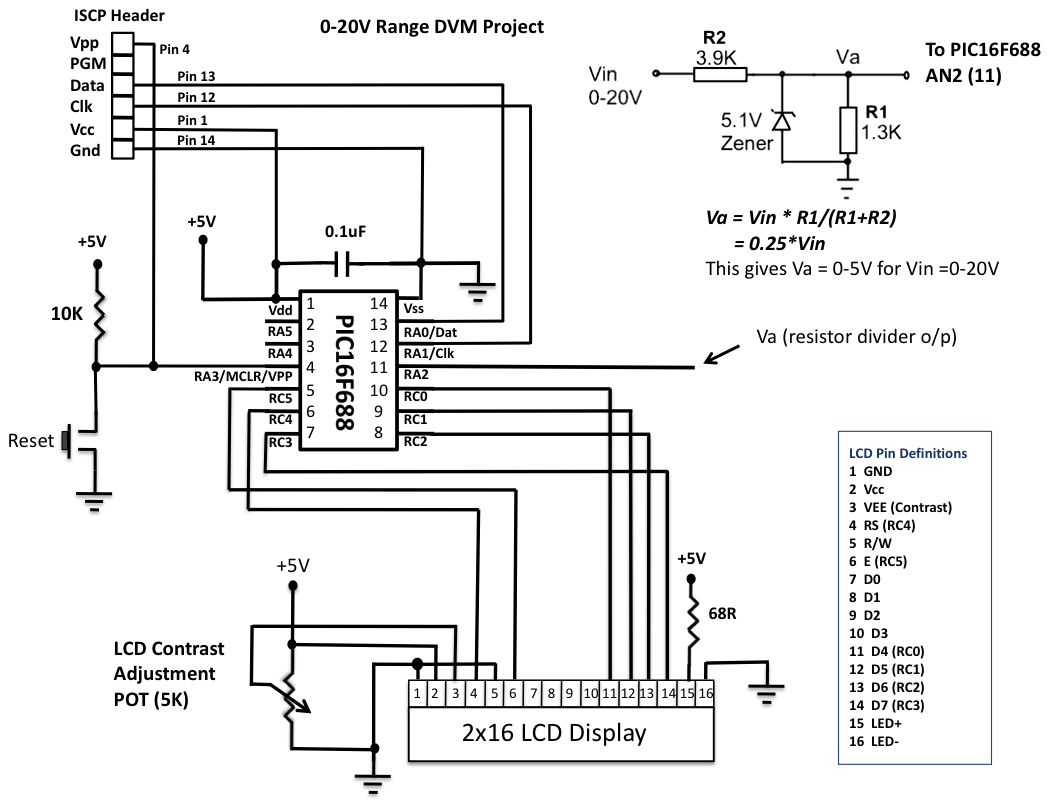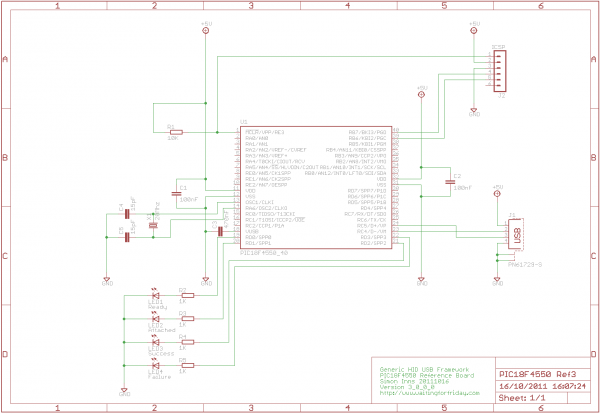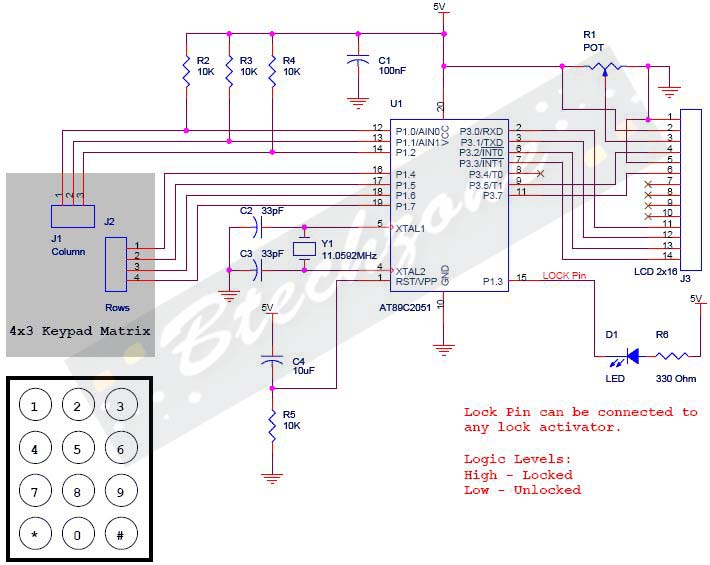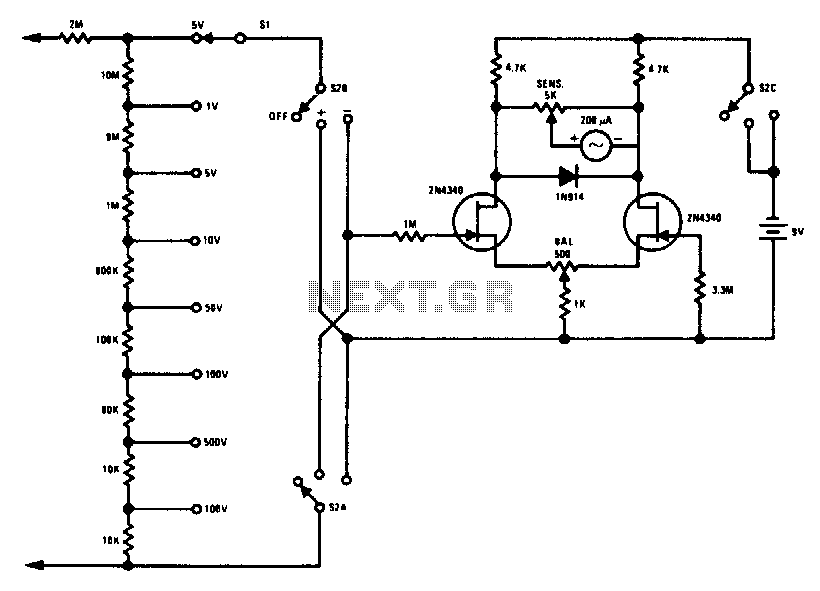
pic16f688 based digital voltmeter

This is another version of an older digital voltmeter (DVM) project that was based on the PIC12F683 microcontroller. The previous version displayed the measured voltage on an LCD driven serially by the PIC12F683 using three I/O pins. The new version utilizes the PIC16F688 microcontroller, which does not require a serial driver, as it has sufficient pins to directly drive an LCD in 4-bit mode. The underlying theory and calculations remain unchanged. A regulated +5V supply is essential for accurate output, as the ADC uses Vdd as the reference for conversion, and all computations are performed with Vdd set to 5V. A regulated +5V can be achieved using an LM7805 linear regulator IC.
The digital voltmeter (DVM) circuit operates by employing the PIC16F688 microcontroller, which enhances the design by allowing direct interfacing with an LCD in 4-bit mode. This reduces the number of required I/O connections and streamlines the overall design. The microcontroller's architecture supports an integrated analog-to-digital converter (ADC), enabling it to measure the input voltage accurately.
The circuit begins with the voltage source being fed into the ADC input pin of the PIC16F688. The ADC converts the analog voltage into a digital value, which is then processed by the microcontroller. The reference voltage for the ADC is set at +5V, which is derived from a regulated power supply. The LM7805 linear regulator is utilized to ensure that the voltage remains stable and within the required range for accurate readings.
In terms of the LCD interface, the PIC16F688 is configured to operate in 4-bit mode, which allows it to control the LCD using only four data lines and additional control lines for enabling and command functions. This configuration not only saves valuable I/O pins but also simplifies the wiring and layout of the circuit.
The software running on the PIC16F688 is designed to periodically sample the input voltage, convert it to a digital value, and display the result on the LCD. The display is updated at regular intervals to provide real-time voltage readings, and the code includes necessary functions for initializing the LCD, sending commands, and formatting the output for clear readability.
In summary, this updated DVM project showcases the advantages of using the PIC16F688 microcontroller for direct LCD interfacing and maintaining accuracy through a regulated power supply, while preserving the core principles established in the earlier PIC12F683 version.Actually this is the another version of my older DVM project that was based on PIC12F683. The older version displays the measured voltage on a LCD that is driven serially by PIC12F683 using 3 I/O pins. The new one uses PIC16F688 microcontroller that doesn`t require the serial driver as it has got enough pins to drive a LCD directly in 4-bit mode.
The theory and math is just the same. You can read my PIC12F683 version of this project here. Important: You need a regulated +5V supply for accuracy of the output. The ADC uses Vdd as the reference for conversion, and all computations are done with Vdd = 5V. You can get a regulated +5V using a LM7805 linear regulator IC. 🔗 External reference
The digital voltmeter (DVM) circuit operates by employing the PIC16F688 microcontroller, which enhances the design by allowing direct interfacing with an LCD in 4-bit mode. This reduces the number of required I/O connections and streamlines the overall design. The microcontroller's architecture supports an integrated analog-to-digital converter (ADC), enabling it to measure the input voltage accurately.
The circuit begins with the voltage source being fed into the ADC input pin of the PIC16F688. The ADC converts the analog voltage into a digital value, which is then processed by the microcontroller. The reference voltage for the ADC is set at +5V, which is derived from a regulated power supply. The LM7805 linear regulator is utilized to ensure that the voltage remains stable and within the required range for accurate readings.
In terms of the LCD interface, the PIC16F688 is configured to operate in 4-bit mode, which allows it to control the LCD using only four data lines and additional control lines for enabling and command functions. This configuration not only saves valuable I/O pins but also simplifies the wiring and layout of the circuit.
The software running on the PIC16F688 is designed to periodically sample the input voltage, convert it to a digital value, and display the result on the LCD. The display is updated at regular intervals to provide real-time voltage readings, and the code includes necessary functions for initializing the LCD, sending commands, and formatting the output for clear readability.
In summary, this updated DVM project showcases the advantages of using the PIC16F688 microcontroller for direct LCD interfacing and maintaining accuracy through a regulated power supply, while preserving the core principles established in the earlier PIC12F683 version.Actually this is the another version of my older DVM project that was based on PIC12F683. The older version displays the measured voltage on a LCD that is driven serially by PIC12F683 using 3 I/O pins. The new one uses PIC16F688 microcontroller that doesn`t require the serial driver as it has got enough pins to drive a LCD directly in 4-bit mode.
The theory and math is just the same. You can read my PIC12F683 version of this project here. Important: You need a regulated +5V supply for accuracy of the output. The ADC uses Vdd as the reference for conversion, and all computations are done with Vdd = 5V. You can get a regulated +5V using a LM7805 linear regulator IC. 🔗 External reference





